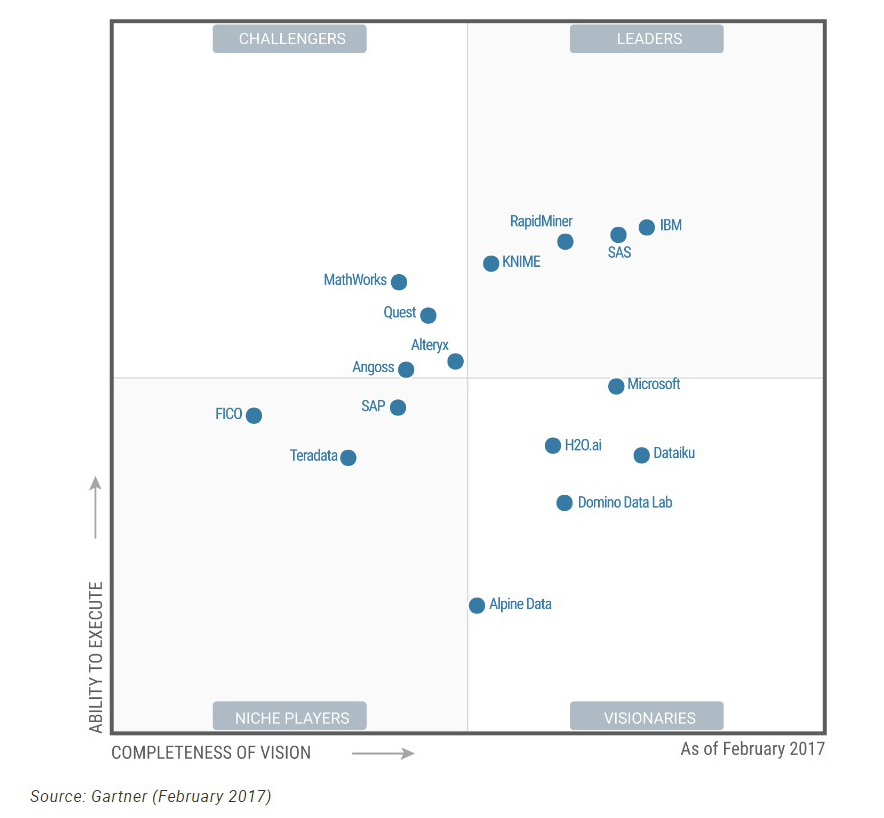Gartner recently issued its Magic Quadrant for Data Science Platforms, formerly the Magi Quadrant for Advanced Analytics. Gartner defines a data science platform as “a cohesive software application that offers a mixture of basic building blocks essential for creating all kinds of data science solutions, and for incorporating those solutions into business processes, surrounding infrastructure and products.”
Gartner revamped its criteria for this Magic Quadrant, with the end result being 16 vendors eligible for inclusion in the report. IBM was one of four companies named in the Leaders Quadrant. Gartner defines Leaders as those vendors with “a strong presence and significant mind share in the market … [they] demonstrate strength in depth and breadth across a full model development and implementation process. Leaders are in the strongest position to influence the market’s growth and direction. They address all industries, geographies, data domains and use cases. This gives them the advantage of a clear understanding and strategy for the data science market, with which they can become disrupters themselves and develop thought-leading and differentiating ideas.”
In this report, Gartner evaluated IBM SPSS Modeler and, to a lesser extent, IBM SPSS Statistics, spoke with IBM customers, and assessed the offerings based on the company’s vision and ability to execute. Gartner cites the following among IBM’s strengths:
- Customer base and innovation
- Commitment to open-source technologies
- Support for a broad range of data types
- Model management and governance

For more information on Gartner Magic Quadrants, check out our other blog posts:
Understanding Gartner’s Magic Quadrants for Analytics, Part 1
Understanding Gartner’s Magic Quadrants for Analytics, Part 2
Understanding Gartner’s Magic Quadrants for Analytics: An Expert’s Take, Part 3
